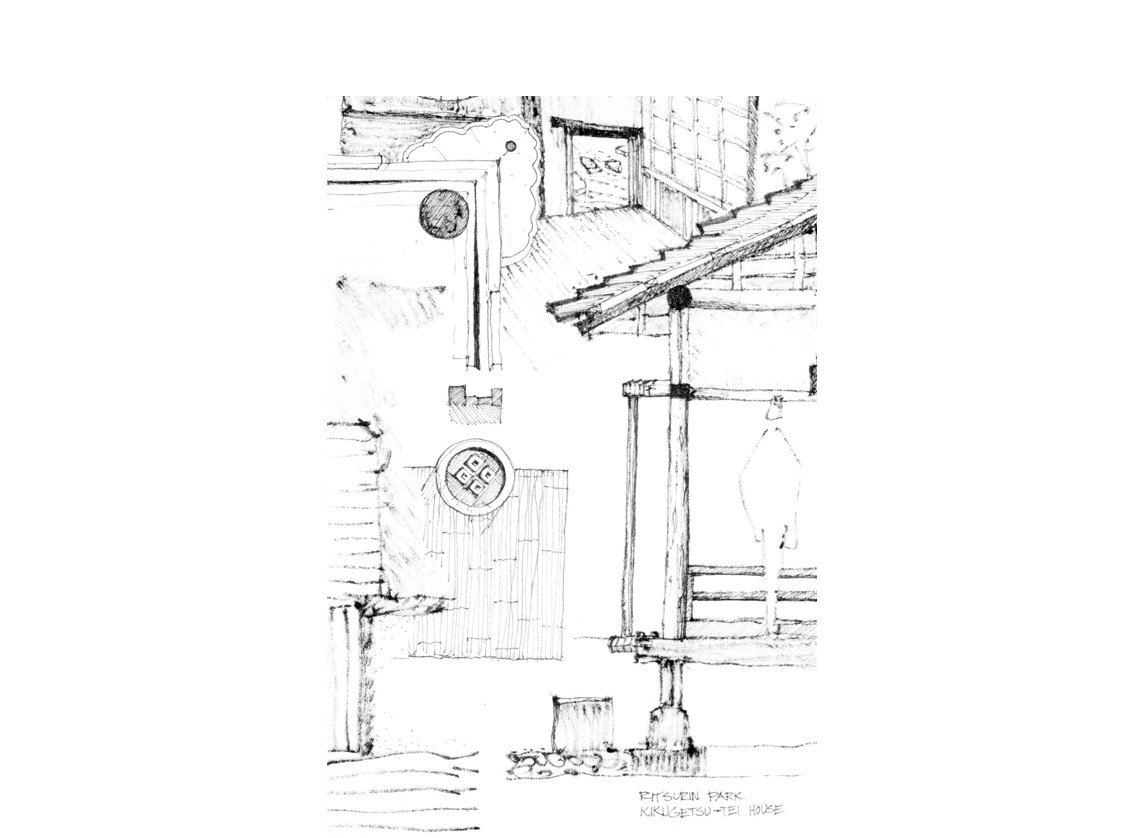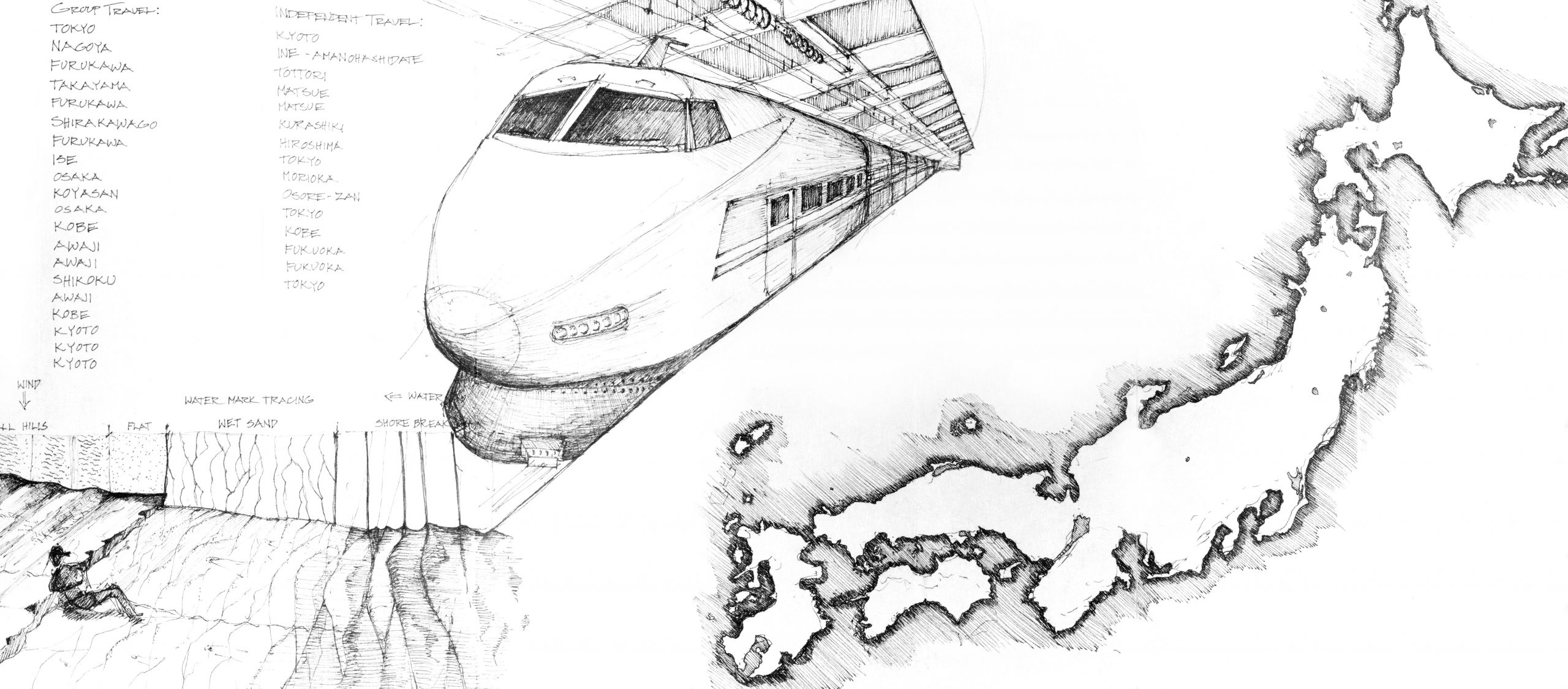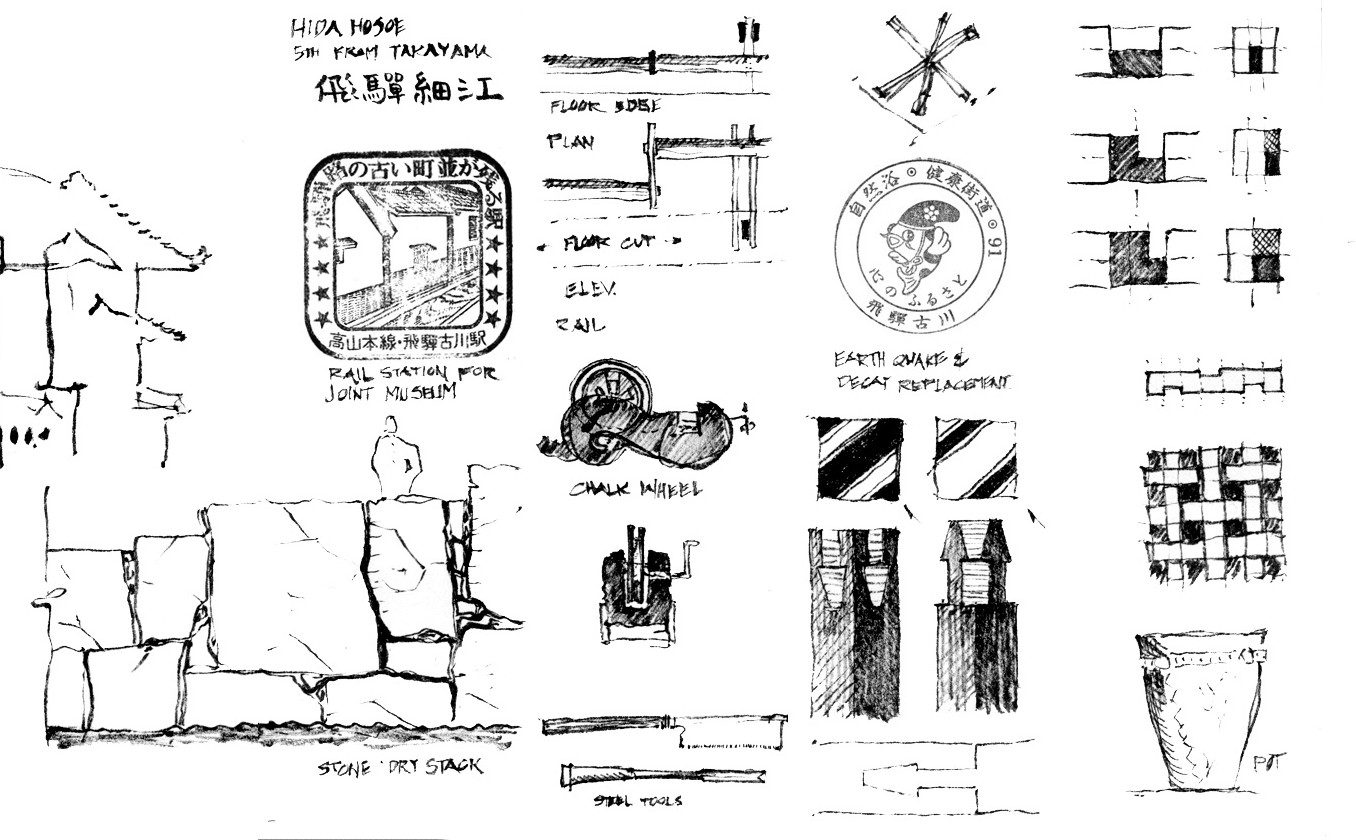5.20-japan-4-detail-d Japanese teahouse
Note: the low square entrance of a traditional Japanese teahouse at the top of this sketch is described at the end of the Learn from Looking book Chapter 5 here is the relevant excerpt on the Japanese teahouse for your convenience:
The Japanese Experience: Japan: Bonus Insights – The Teahouse and General Observations
We have a lot to learn from each other in the global economy.
The Japanese teahouse is a place where the Skia style is often the most understandable. When we were building a teahouse with Kinya (my graduate school architecture professor), I remember him asking me, “Charlie, why do you make the column so straight?” Followed by, “Perhaps you make it a little curved!” The teahouse is also a place to understand the quality of Japanese community. A low door always greets visitors. Regardless of social status or wealth, all people as they enter must bow to humble themselves in respect for the tea ceremony. The door is not only low but also narrow. Even the mighty shogun must remove their swords and leave them outside. The result is that the teahouse is a special place for people to come together on equal ground. (More on the Japanese Experience: https://learnfromlooking.com/japan/japanese-experience/).
Shoji Screens:
This drawing also includes the corner post for a shoji screen. The screen is able to slide along the wooden track without any mechanical bearings or lubricant, because the master carpenters have refined the design with different types of wood over hundreds of years.
The sliding translucent rice paper and wooden panels that are so prevalent in Japanese culture intrigued me. When I worked in Japan, I saw how they were able to divide and transform spaces as well as share light between the spaces. The shoji screens were walls and doors as well as windows. Some critical thinker ages ago challenged the very preconception that a wall needed to be static and opaque versus active and translucent.
Author and illustrator: Charlie Szoradi is an architect, inventor, and the CEO of Independence LED Lighting. He writes about many other topics related to Japanese teahouse and shoji screen design through his extensive travels around the world.
If you have found this posting online, it is an excerpt from Mr. Szoradi’s book Learn from Looking that served as the inspiring seed content for this drawing share resource. For additional drawings and insights on places of cultural significance, like the Japanese teahouse, we hope that you enjoy exploring LearnfromLooking.com. You can search via general terms such as sustainability as well as narrower terms such as Japanese teahouse and shoji screen.




Thanks!
First off I want to say awesome blog! I had a quick question which I’d like to ask if you do not mind. I was curious to know how you center yourself and clear your head before writing. I’ve had difficulty clearing my thoughts in getting my thoughts out there. I do take pleasure in writing however it just seems like the first 10 to 15 minutes are generally lost just trying to figure out how to begin. Any recommendations or tips? Many thanks!| а
Meditation helps along with a plant based diet for healthy mind and body!